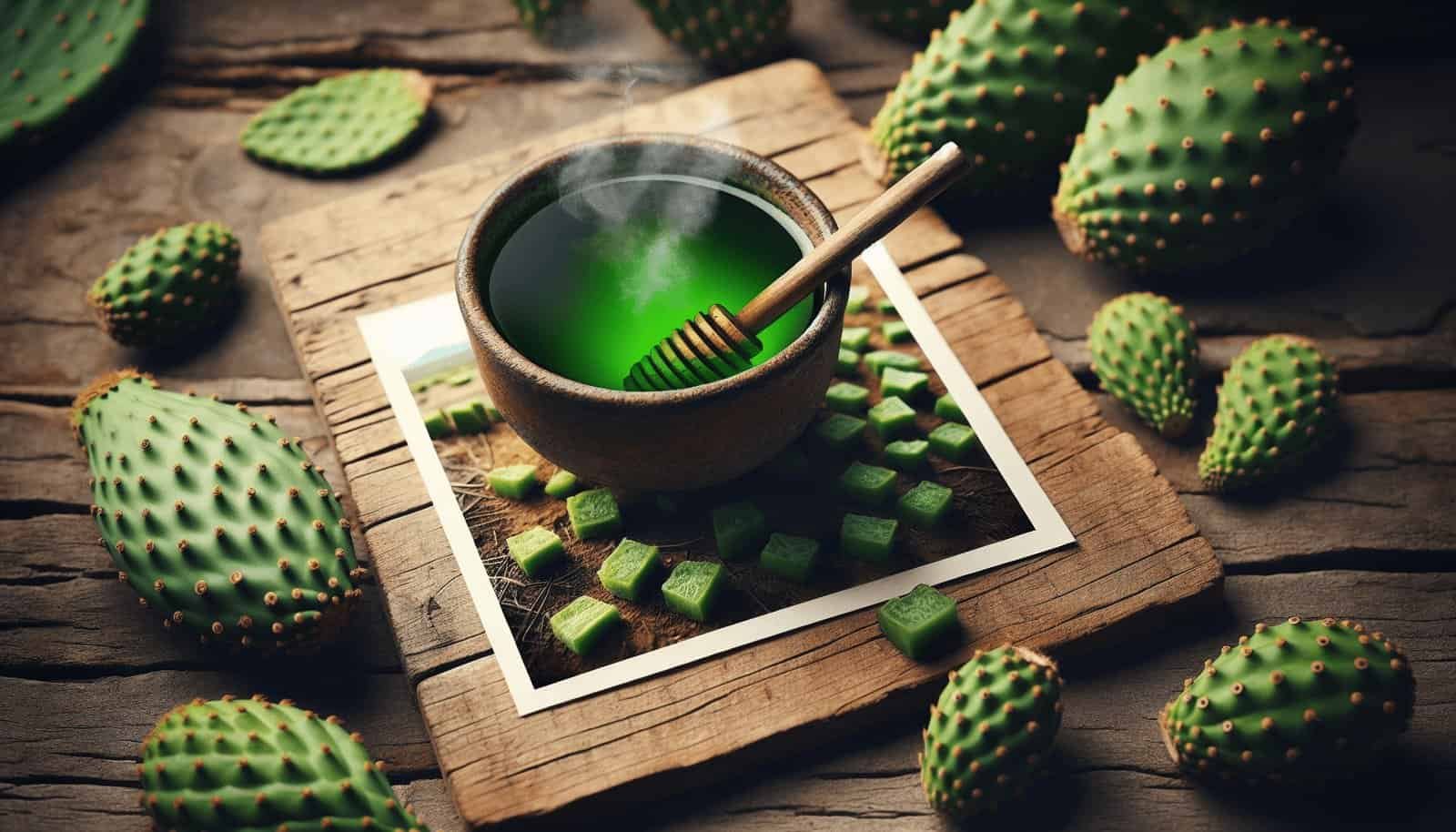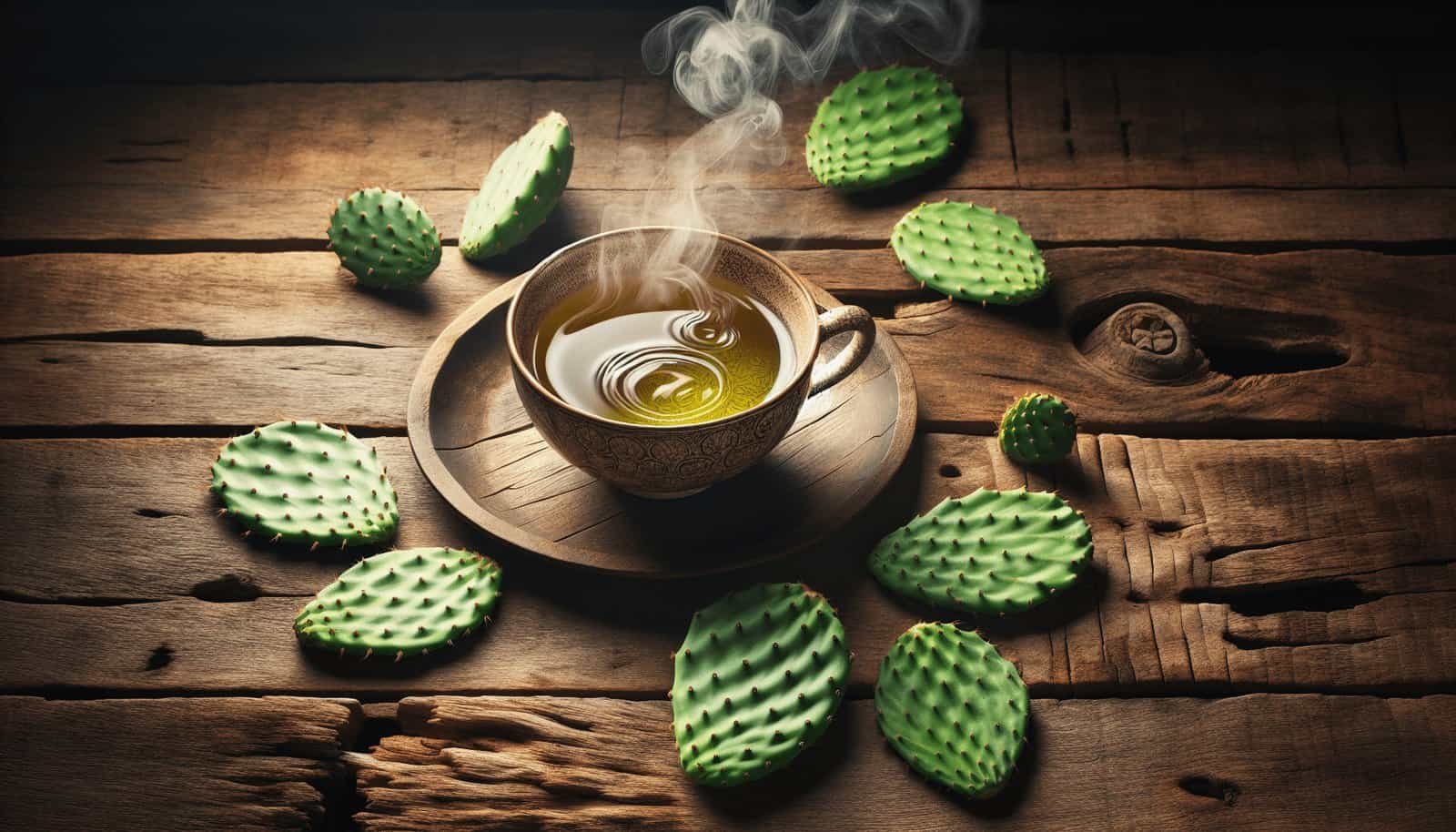Have you ever considered what added benefits drinking Nopal tea could bring to your daily life? This unique tea, made from the pads of the prickly pear cactus, is not just another trendy beverage; it has a rich history and a plethora of health benefits worth exploring.
Understanding Nopal Tea
What is Nopal?
Nopal is the Nahuatl word for the pads of the prickly pear cactus, scientifically known as Opuntia. Native to Mexico and the American Southwest, Nopal has been a staple food source and medicinal plant for centuries. The cactus pads are often used in cooking and have become popular in the form of tea due to their wide-ranging health benefits.
How is Nopal Tea Made?
The process of making Nopal tea involves drying and pulverizing the cactus pads to create a tea that is both refreshing and nutritious. Its subtle flavor and numerous health benefits have contributed to its rising popularity beyond its traditional regions. Unlike many herbal teas, Nopal tea is caffeine-free, making it a soothing choice for any time of the day.
Health Benefits of Drinking Nopal Tea
Rich Source of Antioxidants
Nopal tea is packed with antioxidants, substances that protect your cells from damage by free radicals. Free radicals are unstable molecules that can contribute to aging and diseases, including cancer. By regularly drinking Nopal tea, you can support your body’s antioxidant defenses.
Supports Digestive Health
Nopal tea can have a positive effect on digestion. The high fiber content in the cactus pads plays a crucial role in maintaining a healthy digestive system. It helps to regulate bowel movements and protect your gastrointestinal tract. If you’re looking to improve your digestive health, incorporating Nopal tea into your diet could be beneficial.
Weight Management Aid
If you’re on a weight loss journey or aiming to maintain a healthy weight, Nopal tea might become your ally. The fiber in the tea helps create a sense of fullness, curbing appetite and reducing overall calorie intake. Furthermore, the tea’s components may help in the regulation of metabolic functions.
Blood Sugar Control
Regulating blood sugar levels is another standout benefit of consuming Nopal tea. Studies have shown that Nopal can help in lowering blood sugar levels, making it particularly beneficial for those with diabetes or those at risk of developing it. Drinking Nopal tea may complement lifestyle changes aimed at managing blood sugar levels effectively.
Anti-Inflammatory Properties
Inflammation is a natural body response to injury or disease, but chronic inflammation can lead to various health issues. Nopal tea contains anti-inflammatory properties that can help reduce inflammation in the body, potentially alleviating the symptoms of inflammatory conditions like arthritis.
Boosting Immune System
Your immune system is your body’s defense mechanism against infections and diseases. By drinking Nopal tea, you can provide your body with essential nutrients like vitamins C and E, which are known to boost immune function. A stronger immune system means a healthier you.

Considerations When Drinking Nopal Tea
Possible Side Effects
As with any natural product, it’s crucial to be aware of potential side effects. Some people may experience mild digestive discomfort, such as bloating or diarrhea, particularly if they consume large quantities. It’s always a good idea to start with a small amount and see how your body reacts.
Interactions with Medications
If you’re on medication, especially those for diabetes or blood pressure, consult with a healthcare professional before incorporating Nopal tea into your regimen. The tea’s blood sugar-lowering properties might interact with these medications, requiring adjustments in dosages.

How to Prepare Nopal Tea
Ingredients Needed
To make Nopal tea at home, you’ll need dried Nopal cactus pads, which are available at health food stores or online. Some prefer to use fresh pads, but they should be cleaned and dried beforehand.
| Ingredients | Amount |
|---|---|
| Dried Nopal pads | 1 tablespoon |
| Water | 2 cups |
Step-by-Step Instructions
- Boiling the Water: In a saucepan, bring 2 cups of water to a boil.
- Steeping the Nopal: Add the dried Nopal pads to the boiling water. Reduce the heat and let it simmer for about 10 to 15 minutes.
- Straining the Tea: After properly simmering, strain the tea to remove the cactus bits, pouring the liquid into a cup.
- Enjoying Your Tea: You can enjoy it hot or let it cool down and serve it over ice. Consider adding honey or lemon if you prefer a sweeter or slightly tangy flavor.
Serving Suggestions
Nopal tea has a mild taste that pairs well with other flavors. Experiment by adding cinnamon or ginger for a spice kick or mix with mint leaves for refreshing coolness. These natural additives can enhance both the taste and the health benefits of the tea.

A Brief Look at the Cultural Significance of Nopal
Nopal in Traditional Medicine
Traditionally, Nopal has held an essential place in indigenous Mexican medicine. It has been used for various treatments, from wound healing to addressing respiratory conditions. The cultural reverence for Nopal is a testament to its perceived efficacy and versatility.
Culinary Uses
Beyond tea, Nopal is a cherished food ingredient. It is often grilled, sautéed, or pickled and used in dishes like salads and tacos. Its culinary flexibility reflects its wide acceptance and beloved status in its native gastronomy.

Conclusion
Nopal tea offers an impressive array of health benefits, from aiding digestion to supporting blood sugar levels and providing necessary antioxidants. If you’re looking for a natural beverage that contributes positively to your well-being, Nopal tea might just be the perfect addition to your diet.
Introducing it gradually and consulting with healthcare professionals, especially if you have existing health conditions, will ensure you enjoy the full range of benefits this remarkable tea has to offer. So, why not give Nopal tea a try and discover what it can do for you?


